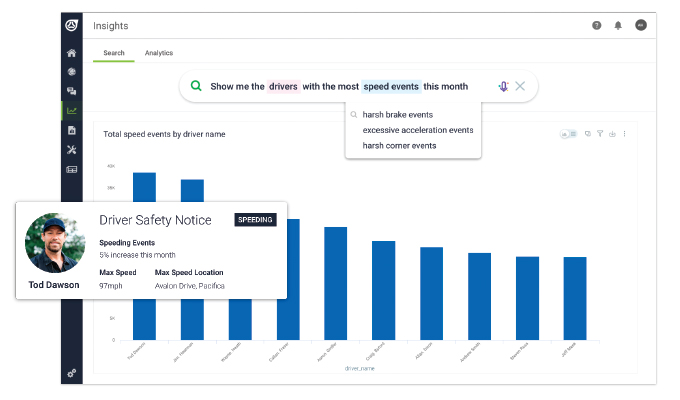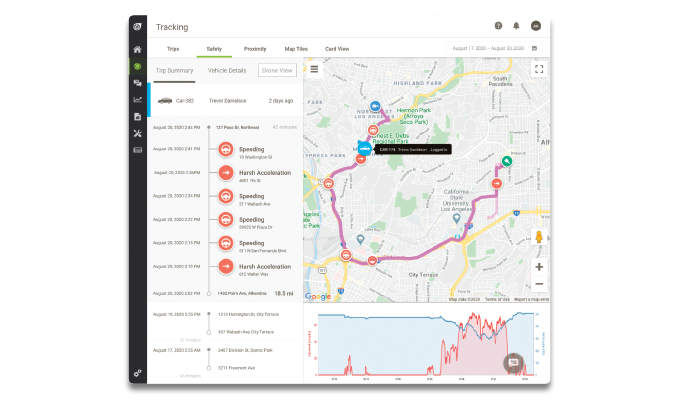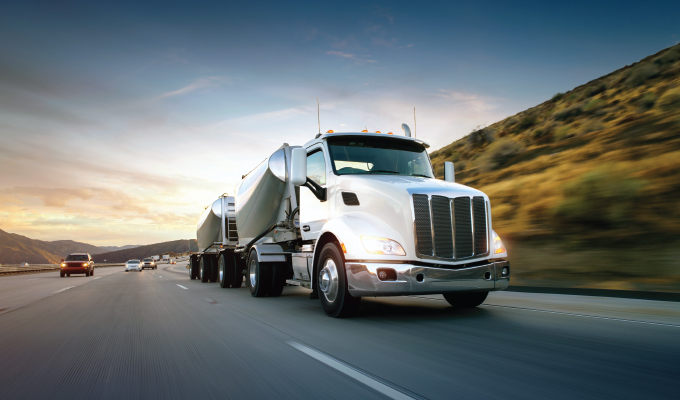By Marco Encinas
Given the high costs associated with fatal accidents for all parties involved, the transportation industry and its stakeholders must prioritize the elimination of these tragic occurrences. With the use of telematics, the latest in video technology, and connected vehicles, many of these incidents can be prevented through consistent—and proactive—vehicle maintenance and continuous driver monitoring, coaching, and evidence-based accountability, saving countless dollars across the industry and, more importantly, many lives.
“Nuclear verdicts”—civil cases with jury verdicts that exceed $10 million that are often the result of these fatal accidents—are on the rise. These momentous decisions significantly affect the fleet management industry, particularly with regards to insurance premiums. According to The Wall Street Journal, the increase in nuclear verdicts has caused premiums to double, far outpacing the rate of inflation. The effects of a nuclear verdict can be twofold, bankrupting mid-sized trucking companies found to be at fault and affecting other trucking companies that may see their insurance premiums spike as well.
Due to the rise in nuclear verdicts, insurance providers have increased premiums on a regular basis to ensure that enough cash reserves are available for the massive payouts. This results in a ripple effect throughout the transportation and trucking industries where each fleet is seen as a riskier business, despite no changes or fatal accidents within a particular fleet. These growing premiums are becoming large costs that cut significantly into the profits of fleet managers, and the primary method of combating these exorbitant costs is through a serious and intentional investment in safety measures, especially through the use of telematics software. Telematics software can help improve an organization’s overall safety ratings with various solutions. By adopting the latest in location-based technology solutions, companies can experience fewer accidents and better manage the risk from an actuarial standpoint.

PRICE OF PAYOUTS
Telematics software provides numerous opportunities to increase driving safety, and the potential to protect both drivers and pedestrians cannot be understated. When paired with driver safety education, accountability, and disciplinary action for negligent drivers, telematics software will prevent the tragic loss of life more effectively than even the harshest nuclear verdicts because the technology is based on proactive and predictive analytics—not reactive civil procedures that only begin after the tragedy has occurred.
Juries have triggered huge payouts, which have caused much discussion about their validity. Some legislators have called for capping nuclear verdicts to stabilize the economics within the sector, while others have called for steeper burdens of proof. But whether you are for reforming liability laws or just think the system is unfair, we should acknowledge that nuclear verdicts do in fact serve a very important purpose in the transportation industry—they hold fleet businesses to a higher accident accountability standard, given the weight and potential danger of the size of their vehicles.
This is not to say that the current system is perfect. The payouts and trickle-down effect they have on the industry as a whole will inevitably have unintended consequences and could harm those who’ve done everything right. However, even those who are against compensatory damages as a practice are still motivated to reduce the number of fatal accidents just from a moral standpoint.
HOW TELEMATICS HELPS
One of the best ways to reduce a fleet’s accident rate and minimize its nuclear verdict exposure is to use telematics. According to the Federal Motor Carrier Safety Administration, vehicles equipped with telematics software have been linked to safer driving patterns as well as better fuel economy and fewer emissions.
With notable advancements in sensor technology, data processing, and the internet of things (IoT), vehicles today can be “connected” like never before. Fleet managers and compliance officers can see into a driver’s cabin or out of the windshield to spot dangerous situations in real time. Advanced telematics platforms can also calculate tire pressure, balance, speed, and general wear and tear on a vehicle. All of this functionality goes a long way toward preventing accidents.
Capturing data is easy but analyzing all of it properly and taking action before something bad happens is key. Since telematics software can collect countless data points, the best way to make sense of it all is to apply an equally impressive filter powered by artificial intelligence (AI).
Dashboard cameras that use machine-learning algorithms can detect driving threats at a far superior rate than that of a driver or back-office safety manager. Inside the vehicle, AI-powered video cameras can identify driver fatigue behaviors that may lead to an accident. These measures all add up to result in safer roads and fleet drivers returning home safely at the end of their routes.
MAINTENANCE & ROUTING
In addition to real-time safety detection, analytics are also crucial for providing proactive maintenance on work trucks so that parts don’t malfunction while vehicles are in service. Even if someone operates cautiously with a fully optimized analytics platform, there is still a risk that the vehicle could have a problem that leads to an accident. Often these mechanical failures can be addressed ahead of time, which would prevent critical injury or loss of life. On the road and jobsites, the stakes are too high to ignore such measures, especially now that the technology is widely available.
Fleet and asset management software that relies on the global positioning system (GPS) can inform fleet managers, drivers, and jobsites where vehicles are on their routes and compare the progress to other relevant data sets, such as traffic patterns and nearby hazards. This information is useful not just in managing vendor relationships and fleet efficiencies, but also in helping drivers avoid dangerous areas or accident hotspots. Any action to avoid tragedy, no matter how small, is worth it once you consider the magnitude of how tragic and costly an accident can be.

COACHING ASSISTANCE
The ultimate safeguard, however, is not the computer, the data analyst, or even the juror in a negligence case. It’s the drivers themselves. They are the ones who are responsible for the safety of the vehicle while it is in service. The telematics and continuous video monitoring capabilities are merely tools to help drivers perform at the best of their abilities. To incentivize this, fleet managers can use telematics and video footage to coach drivers, reward them, and maintain scorecards detailing their progress and/or specific areas of improvement.
Additionally, fleet and safety managers need to follow through on the coaching and training on a regular basis to ensure drivers are adopting and consistently following the improved techniques as informed by the software.
Through the right software investments, fleet companies can correct poor driving patterns and prevent many accidents. Widespread adoption of these technologies will essentially lead to safer roads and reduce the occurrence of nuclear verdicts. The solution to our safety problem is not only a legal one. A proactive approach must be taken to increase road safety, not a purely reactive approach. The trucking industry needs to evolve and innovate, regardless of the presence or absence of nuclear verdicts. Accidents can happen—some with tragic consequences—but most can be avoided entirely with better driving behaviors, critical insights, and improved vehicle upkeep.
Thanks to the latest advancements in telematics and video monitoring technology, we can implement meaningful changes that greatly impact and improve driving safety and minimize unsafe driving behaviors. Whether the decision to invest in telematics software is driven by your desire to protect your fleet, to make the road safer, or to avoid a nuclear verdict, the resulting benefits are a net positive for all.
ABOUT THE AUTHOR
Marco Encinas is the director of product management at Teletrac Navman. Marco plans the product strategy and roadmap releases globally for all of Teletrac Navman’s software platforms. He gains industry insights from customers, integration partners, and research and development to improve current Teletrac Navman product features and tools and drive development of new product requirements. Find out more, visit www.teletracnavman.com.




